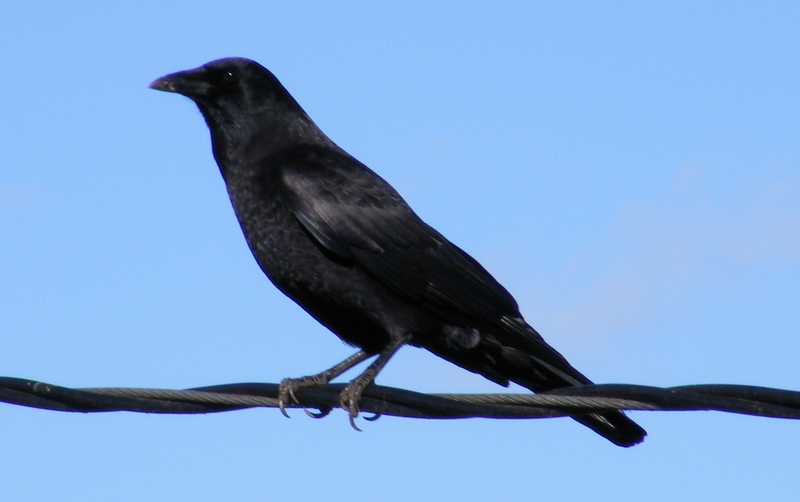|
| 질의: hatchling | 결과: 203번째/251 | |
Northwestern Crow (Corvus caurinus) - Wiki
| 제목: | Northwestern Crow (Corvus caurinus) - Wiki
| |

| 해상도: 1733x1087
파일크기: 458368 Bytes
촬영일: 2007:10:24 15:39:11
사진기: FinePix S5700 S700 (FUJIFILM)
F number: f/6.3
Exposure: 10/3200 sec
Focal Length: 6330/100
등록시간: 2007:12:03 10:53:59
|
Northwestern Crow
From Wikipedia, the free encyclopedia
Order: Passeriformes
Family: Corvidae
[Photo] Northwestern Crow (Corvus caurinus) watches its photographer. Date: 24 October 2007. Photo by Tony Perodeau. Copyright (C) 2007 Tony Perodeau
Permission is granted to copy, distribute and/or modify this document under the terms of the GNU Free Documentation License, Version 1.2 or any later version published by the Free Software Foundation; with no Invariant Sections, no Front-Cover Texts, and no Back-Cover Texts. A copy of the license is included in the section entitled "GNU Free Documentation License". |
The Northwestern Crow (Corvus caurinus) is an all-black passerine bird of the crow genus native to the northwest of North America. It is very similar to the more western forms of the widespread American Crow (Corvus brachyrhynchos) but it is slightly smaller (33-41 cm in length) and has proportionately smaller feet with a slightly more slender bill. It is the calls that are significantly different and often serve to identify it.
Distribution and habitat
This North American species occurs, as its name suggests, from the north-western coastal regions and offshore islands of southern Alaska, down through British Columbia and Washington state. Beaches and shorelines are the principal forage areas. It can often be seen in and around urban areas.
Behaviour
Diet
Very similar to that of the Fish Crow; the Northwestern Crow eats stranded fish, shellfish, crabs and mussels, and also searches through refuse containers for suitable food items. It has been seen to fly into the air with mussels and drop them onto hard surfaces to break them open. It also regularly eats insects, other invertebrates, and various fruits (especially berries). It raids other birds' nests to eat eggs and hatchlings. It takes handouts and remembers anyone who discards food. It is known to soak pieces of bread in water.
Predators
An incomplete list includes cats, raccoons, raptors and ravens. The crows often gather in large groups to mob these predators.
Nesting
Generally solitary, but sometimes built in association with a few other individuals in small, loose colonies in trees or sometimes large bushes. Very rarely, it will nest on cliffs in a recess or even on the ground in a remote area if overhung by a rock for shelter. It is a typical crow nest with 4-5 eggs usually laid.
Voice
The voice is very varied, and many types of call are made, but the most common are usually described as a high pitched "caw" and the sound of a cork coming out of a bottle. A "wok-wok-wok" is given by a bird in flight if straggling behind the group, and various clicks and mechanical sounding rattles are also heard.
http://en.wikipedia.org/wiki/Northwestern_Crow
| The text in this page is based on the copyrighted Wikipedia article shown in above URL. It is used under the GNU Free Documentation License. You may redistribute it, verbatim or modified, providing that you comply with the terms of the GFDL. |
|
^o^
동물그림창고 똑똑전화 누리집
^o^
|
|

